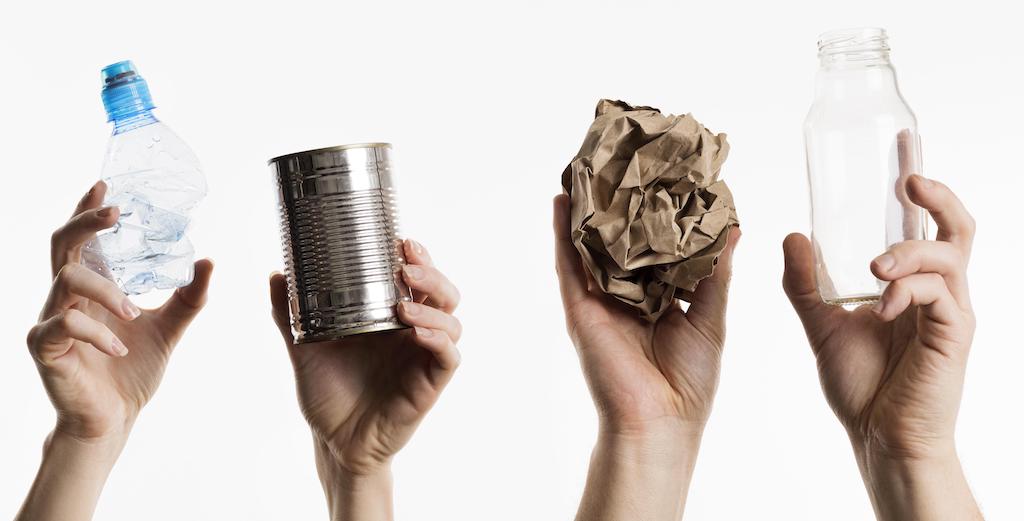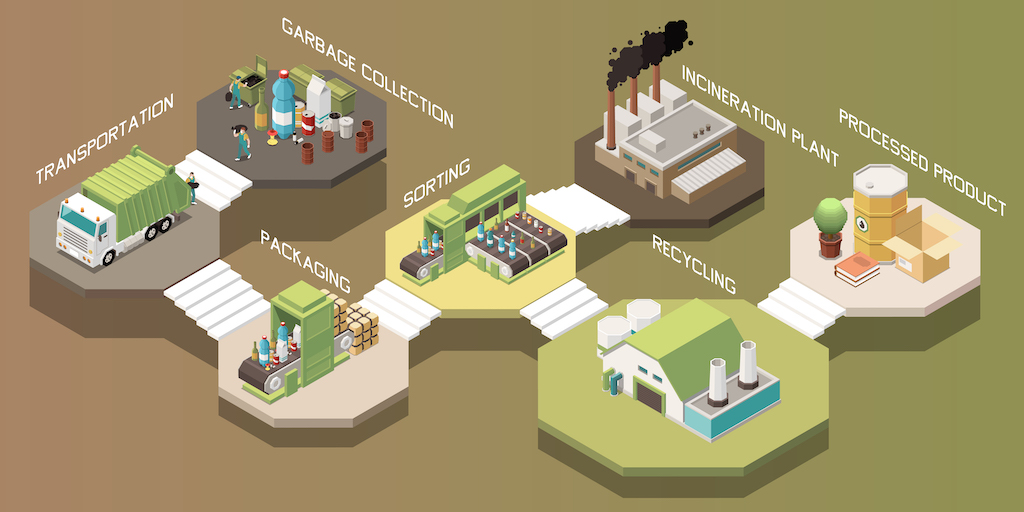We must alter the way we think about waste.
Recycling has several advantages beyond merely lowering the quantity of garbage disposed in landfills. In addition to environmental advantages, recycling also has economic and social benefits.
Suppose we start to see the waste produced by this amount of consumption differently. In that case, even if we live in a consumer-driven world with a growing thirst for new goods, we could transform our issue into an opportunity.
What is Recycling and Why is It Important?
The goods and materials that can be utilised after serving their initial purpose, whether they are made of plastic, paper, or aluminium are by no means useless. In actuality, the majority of materials are highly recyclable. According to estimates, up to 75% of all garbage may be recycled or used again, showing how effective the process can be when done correctly. Almost everything we come into contact with may be recycled, albeit various materials require different recycling processes. Batteries, biodegradable trash, textiles, electronics, clothing, glass, metals, paper, plastics, and many more items are often recyclable materials.
Recycling is known as the procedure of sorting, gathering, and remanufacturing discarded or waste items into new materials. However, we must alter our individual and collective responses to concentrate on recycling.
By reducing something to its essential components and employing those components to create something usable, recycling aids in extending the life and usefulness of something that has already achieved its goal. It is one of the three sustainability “golden laws” (Reduce, Reuse, and Recycle) and offers many advantages to both the environment and people. Almost the entire earth is affected by how much recycling we do.
What Makes Something Recyclable?

When you think about what makes something recyclable, many of us believe it’s anything we can haphazardly toss into our municipal recycling bins. When we do this, we frequently experience a sensation of environmental pleasure, as though we have prevented ten trees from being ruthlessly felled in a rainforest.
But there is much more to the question of what makes something recyclable than meets the eye.
Recycling is a more complex topic than many people might think. When it is considered only one component of an integrated waste management approach, this complexity is significantly increased in terms of the issues involved, the techniques to be chosen, and the financial and environmental evaluation required to ensure tangible benefits are achieved. If it can be gathered, sorted, processed again, and then utilised to create or manufacture another item. This is often referred to as sustainable goods, which may be readily transformed into new products with little to no adverse effects on people or the environment.
“One component of an integrated strategy” is all that it is. For instance, something may not be recyclable even when separated from other objects to be recycled. Something is not recyclable only because it can be converted into something new.
If not, even though many of us think that doesn’t happen if it’s put in our recycling bin, it eventually makes its way back to landfills. Despite sending their trash to the same processing facility, several cities often provide citizens with conflicting information on what may be disposed of curbside.
How Does the Recycling Process Work

Understanding how recycling works is necessary. Recycling is the process of turning trash into new products and materials. Recycling needs a sizable supply of homogenous materials, a method for gathering and processing those resources, and a market demand to function. And it must all be economically justified.
Global trade in recyclable materials takes place daily. Recycling is impossible without end markets that can use these resources to create new commodities and products. Moreover, even while it may seem nice to put things out for recycling, they are not actually “recycled” until they pass through a complicated procedure. Whether an object can be recycled or not depends on three variables.
Collection
Recycling has changed from requiring you to separate your paper, cans, and glass at the curb to a commingled collection that collects all of your recyclables together. To be organised, mix your recyclables in a cart, bag, or bin today. The sorting that people used to do themselves must now be done at a processing facility known as a Material Recovery Facility (MRF), which has complicated the recycling of residential recyclables. Mechanical sorting restricts the materials that may be collected for recycling at these facilities. These systems classify certain products according to their shape, size, and material composition.
There are several methods for collecting recyclables, including:
- Curbside collection
- Drop-off recycling centres, retail locations, or collection events
- Deposit / refund programs
Processing
Residential recycling is collected and taken to an MRF for processing and sorting. To separate the cans, cartons, fibre, glass, and plastic bottles and jugs into different commodity streams, the combined recyclables pass through a sequence of conveyors, disc screens, optical sorters, and magnets.
Selling/Remanufacturing
After being sorted, curbside recyclables are often baled and sold on the open market. The following commercial and economic elements will assist in establishing if a given material is recyclable as part of the global economy.
More and more of today’s products are being manufactured with recycled content. You probably already buy products with recycled content and don’t know it. Everyday household items that contain recycled materials include:
- Aluminium cans
- Car bumpers
- Carpeting
- Cereal boxes
- Comic books
- Egg cartons
- Glass containers
- Laundry detergent bottles
- Motor oil
- Nails
- Newspapers
- Paper towels
- Steel products
- Trash bags
Recycled materials are also used in new ways, such as recovered glass in asphalt to pave roads or plastic in carpeting and park benches.
Purchasing Recycled-Content Products
You’re not recycling unless you buy recycled, i.e., “closing the loop.” A recycled product is made whole or part from material recovered from the waste stream. Recycled-content products are comparable in price and quality to products made from virgin materials. Buying recycled content products creates long-term markets for recyclable materials.
When you shop, look for the following:
- Products that can be easily recycled.
- Products that contain recycled content.
- Look for products with the highest post-consumer content.
Common Materials That Can be Easily Recycled

- Paper: Magazines, newspapers and office papers can usually be recycled, but only some paper products are recyclable.
- Glass: Glass is infinitely recyclable except for the type of glass used in mirrors. One ton of recycled glass saves 42 kWh of energy, and two cubic yards of landfill space and recycling glass is 33 percent more energy efficient than creating new glass.
- Plastic: While plastics #1 PET and #2 HDPE are the most recyclable, only some plastics can be recycled.
- Food waste: food waste is a recyclable material. Food waste can also be reused and repurposed at home.
- Steel: Steel is the most recycled material by weight.
- Aluminium: Aluminum is recyclable because it can be melted down and used infinitely to create new aluminium products
- Cardboard: Recycling, one ton of cardboard, saves nine cubic yards of space in a landfill. Concrete: Concrete is another material that can be recycled and used repeatedly.
Benefits of Recycling

Our recycling practices at home, school, and work must improve significantly.
The Malaysian government wants to recycle 40% of municipal garbage by 2025, but we still have a long way to go because the country recycles roughly 31.52% of its current waste.
We must never forget how important recycling is to maintaining the sustainability of our world. Here are seven justifications:
Protecting the Environment
Natural resources are limited in number, and some are in extremely short supply.
A fundamental level:
- Forests and trees are preserved by recycling paper and wood. Yes, new trees may be planted, but if an ancient forest or virgin rainforest is destroyed, they cannot be replaced.
- Recycling plastic results in producing less new plastic, which is undoubtedly a positive thing considering that it is often formed from hydrocarbons extracted from fossil fuels.
- Metal recycling eliminates the need for dangerous, costly, and destructive mining and extraction of new metal ores.
- Recycling glass decreases the requirement for new raw resources like sand, which is hard to imagine given that some types of sand are becoming scarce globally.
Protecting Ecosystems and Wildlife
Recycling lessens the need to cultivate, gather, or mine fresh raw materials from the planet.
As a result, less harm is caused to the environment, including reduced forest destruction, river rerouting, injury or displacement of wild species, and decreases in water, soil, and air pollution.
Of course, suppose our plastic garbage needs to be correctly disposed of in the recycling. In that case, it may wind up hundreds or thousands of kilometres away, damaging waterways and coasts, which would concern everyone.
Reducing Demand for Raw Materials
More of the poorest and most vulnerable people (such as those who live near woods or river systems) are being evicted from their homes or subjected to various forms of exploitation due to the growing demand for new goods worldwide. Forest populations may be uprooted in the quest for inexpensive wood, and industrial waste may desecrate or contaminate waterways.
Recycling pre-existing items is considerably preferable to degrading another person’s neighbourhood or piece of property while looking for fresh raw materials.
Saving Energy
Energy is used less efficiently when items are made from recycled materials than when new raw materials are used. Sometimes the difference in power is enormous. For instance:
- Utilizing recycled materials to create new aluminium saves 95% more energy than making it entirely from scratch. There are about 70% energy savings for steel.
- 40% less energy is required to produce paper from pulped recycled paper than it is to make paper from virgin wood fibres.
- An old 100-watt light bulb could run for 4 hours on the energy saved from recycling one glass bottle, while a new low-energy LED bulb could run for much longer.
Reducing Carbon Emissions that Cause Climate Change
Recycling reduces carbon emissions since it requires less energy to find and process fresh raw materials. Additionally, it prevents garbage that may release methane from entering landfills.
Reduced atmospheric emissions of carbon dioxide and other greenhouse gases are essential to halting dangerous climate change.
Recycle Your Material With Gargeon Smart Waste Management System
One platform that works with you to meet your financial and legal needs and links you to reliable specialists about waste management is Gargeon. Yes, our clients are happy with the waste management services we provide with legal restrictions. They continually hold us in high respect and provide regular updates due to our focus on making it simple.
Additionally, our users may always keep tabs on the development of their land, business or housing area. Our knowledgeable specialists are available by phone if you have any queries concerning the Waste Management procedure. Gargeon will make sure that your interactions with business people are pleasant and smooth.
Do contact Gargeon to discover a more thoughtful way to manage your waste.

